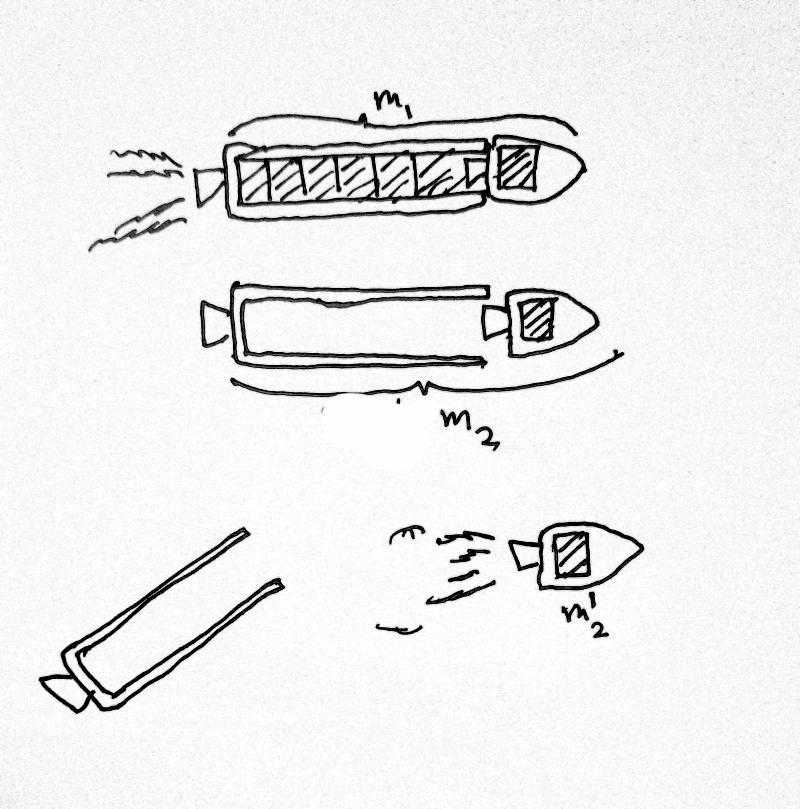
Ever wondered why practically all space launchers have at least two stages? And some, like Saturn 5, have three (four if you count the Service Module engine)?
Well, let's go back to our calculation for reaching LEO. We did it in a single stage. We've found that 92% of the rocket mass needs to be fuel.
That leaves 8 percent for everything else. Engine, fuel tanks, payload, capsule, and the very body structure of the rocket itself! Rockets accelerate at multiple times gravity. The forces they experience are tremendous.
Do you really want a rocket whose structure is only 8 percent of the starting mass? It's fine for small model rocket. But for large rockets, something like this could happen:
It is absolutely possible to build a rocket that's just too thin-skinned!
What you can do instead, is make the rocket a bit chunkier. Let's say, 25 percent of the starting mass is the ship, 75 percent is fuel.
Your rocket is now a bit stronger structurally. It just can't reach orbit it one go, the delta v is just over about half what is needed.
At this point, eject the first stage. Now you have a new initial mass with fuel. Start the engines and go all the way. The second stage body can be as much as 33 percent of the total mass, with the remaining 67 percent as fuel. No problem about weak structures here.
But there is a price to pay. The mass that actually reaches orbit is just TWO PERCENT of the original mass at the beginning of the launch!
The following is a rough series of calculations, with some assumptions made.
So we start with m1/m2 = 5. That means, the fuel mass is four times the mass of the rocket structure.
$$ \Delta v = V_e \ln( \frac{m_1}{m_2}) = 3000 \ln(5) $$
The result is delta v of 4828 m/s. Our target is 7500 m/s. We need an additional 2672 m/s.
At this point, we eject the first stage. Let's say by ejecting the first stage, we lose a lot of the remaining mass m2. Let's say we lose half of m2. We might call this m2'.

After firing the second stage engine to gain 2672 m/s, the final mass is m3.
$$ \frac{m'_2}{m_3} = e^{\frac{2672}{3000}}=2.44 $$
$$ 1 + \frac{m_{fuel}}{m_3} = 2.44 $$
$$ \frac{m_{fuel}}{m_3} = 1.44 $$
Plus, a trivial amount of burn to "kick" the ship into circular orbit at LEO.
Okay, how much mass actually gets to orbit?
(stage 1 mass fraction) x (fraction of mass after stage 1 ejected) x (stage 2 mass fraction)
$$ \frac{1}{5} \times \frac{1}{2} \times \frac{1}{2.44} = 0.04 $$
Four percent of the starting mass reaches orbit.
Of course, this depends on the mass of the empty first stage that we ejected. We assumed it to be half of the remaining mass. It could be higher. If the empty first stage is 3/4 of m2, leaving only 1/4:
(stage 1 mass fraction) x (fraction of mass after stage 1 ejected) x (stage 2 mass fraction)
$$ \frac{1}{5} \times \frac{1}{4} \times \frac{1}{2.44} = 0.02 $$
Only two percent makes it to LEO.
It explains why launch vehicles are so massive compared to their payloads.